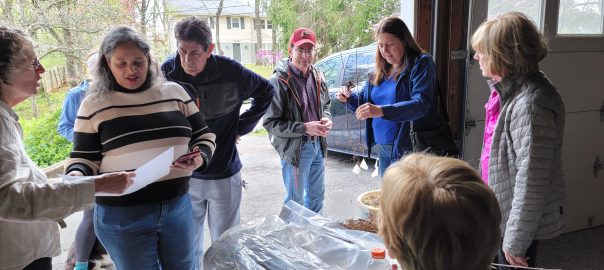On Friday, April 12, 2024, the Mill Creek Towne Garden Club gave away 100 FREE native trees and shrubs provided to us by the Maryland Department of Natural Resources.
Thanks for everyone who showed up at our Free Native Tree and Shrub Giveaway and made it a successful event! Enjoy your new Native plants! Below are instructions for care of your new trees and shrubs. 



Trees/Shrubs:
- Pin Oak
- Serviceberry
- Redbud
- River Birch
- Hazelnut
- Black Cherry
- Indigo Bush
- Silky Dogwood
- American Sycamore
The trees come bareroot – they need to be planted as soon as possible and you will need to provide deer protection unless they are inside a fenced area that the deer do not frequent. Please bring damp newspaper to wrap the roots up until they are ready for planting.
For more detailed guidance on planting and caring for bare root trees visit: https://dnr.maryland.gov/forests/Documents/Planting-Guide-Brochure.pdf
Dealing with deer…
Deer management and Tree cages: Watch for the presence of deer. Use repellents during installations and cage ALL trees and shrubs to prevent deer browsing and rubbing. I cannot emphasize this enough – cage immediately upon planting to avoid catastrophe! For guidance on caging see this handy guide: https://mywoodlot.com/images/supporting_information/installing_tree_cages.pdf
Deer fencing material: I have had excellent success using Tenax brand deer fencing. This material is UV stable and sturdier than the usual flimsy mesh typically available at Home Depot and Lowes. The flimsy stuff will tear more easily and I have repeatedly found snakes stuck in this mesh. To avoid the snake problem and for a sturdy product, be sure to purchase Tenax with 1-¾” by 2” mesh size. Zip ties work well to secure the Tenax to a stake and to itself.
Donations
These plants are free to the public, but we do welcome donations to the Club to help us continue to beautify our neighborhood and provide quality programming. To donate and consider joining the Mill Creek Towne Garden Club, please visit:
Donate Today!
Resources
| Pin Oak
Pin Oak (Quercus palustris): Growing up to 80 feet tall, the Pin Oak is a majestic addition to any landscape. Its deeply lobed leaves turn a fiery red in fall, while its tolerance for various soil conditions makes it an adaptable choice.
Photo Credit: Bruce Marlin, CC BY-SA 2.5 |
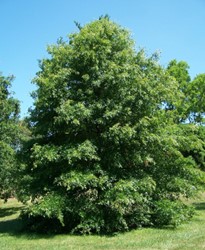 |
| Serviceberry
Eastern Serviceberry (Amelanchier canadensis): This charming small tree, reaching heights of 15-25 feet, is a showstopper in spring with delicate white flowers. Edible berries follow in summer, attracting a variety of birds and pollinators, making it a favorite for wildlife gardens.
Photo Credit: Walter Siegmund, CC BY-SA 3.0 |
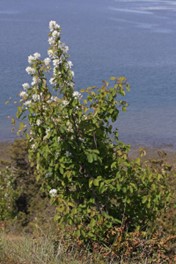 |
| Eastern Redbud
Eastern Redbud (Cercis canadensis): A fast-growing delight, the Eastern Redbud bursts with vibrant pink blossoms in early spring before its heart-shaped leaves unfurl. This 20-30 foot tall tree is a guaranteed conversation starter and adds a pop of color to any yard.
Photo Credit: Downspec, CC BY-SA 4.0 |
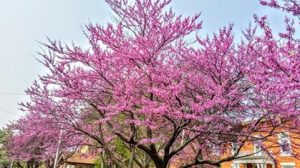 |
| River Birch
River Birch (Betula nigra): This fast-growing favorite can reach heights of 70-100 feet. Its most striking feature is the cinnamon-colored bark that peels in papery layers, adding year-round interest. Thriving in moist areas and tolerating occasional flooding, it’s a perfect choice for wetter landscapes.
Photo Credit: By Jgwil2 – Own work, CC BY-SA 4.0, https://commons.wikimedia.org/w/index.php?curid=89413687 |
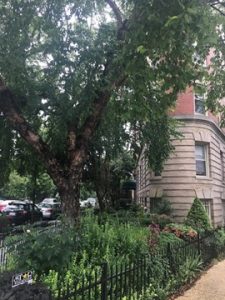 |
| American Hazelnut
American Hazelnut (Corylus americana): A shade-tolerant understory hero, the American Hazelnut grows 8-15 feet tall. Not only does it provide delicious nuts for wildlife and people in fall, but its contorted branches add a unique charm to your yard.
By Krzysztof Ziarnek, Kenraiz – Own work, CC BY-SA 4.0, https://commons.wikimedia.org/w/index.php?curid=78618200 |
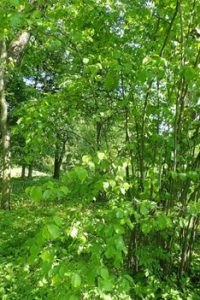 |
| Black Cherry
Black Cherry (Prunus serotina): Reaching heights of 60-80 feet, the Black Cherry is a haven for pollinators. Fragrant white flowers erupt in spring, followed by clusters of dark, sweet cherries enjoyed by birds and people alike. This fast-growing tree offers both beauty and delicious treats.
Katrin Schneider, korina.info – CC-BY-SA-4.0, CC BY-SA 4.0 <https://creativecommons.org/licenses/by-sa/4.0>, via Wikimedia Commons |
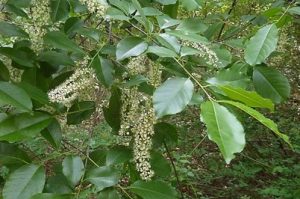 |
| Indigo Bush
Indigo Bush (Amorpha fruticosa): This low-maintenance gem grows 8-12 feet tall. A true pollinator magnet, it explodes with vibrant indigo flower spikes in summer, adding a burst of color and attracting butterflies. Easy to care for, the indigo bush offers season-long visual interest.
Photo Credit: Аимаина хикари, CC0, via Wikimedia Commons |
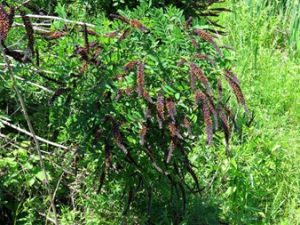 |
| Silky Dogwood
Silky Dogwood (Cornus amomum): A delicate shade-lover, the Silky Dogwood reaches 6-8 feet tall. Clusters of white flowers grace the branches in spring, followed by attractive red berries in fall. Its reddish stems add a touch of winter beauty, making it a captivating addition to shady areas.
Photo Credit: Douglas Goldman, CC BY-SA 4.0 <https://creativecommons.org/licenses/by-sa/4.0>, via Wikimedia Commons |
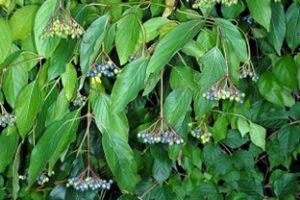 |
| American Sycamore
American Sycamore (Platanus occidentalis): A true giant of the forest, the American Sycamore can reach heights of 100-130 feet. Providing ample shade with its massive leaves, it’s a perfect choice for large landscapes. The distinctive bark adds a dramatic touch, making it a statement tree for any yard.
Katja Schulz from Washington, D. C., USA, CC BY 2.0 <https://creativecommons.org/licenses/by/2.0>, via Wikimedia Commons
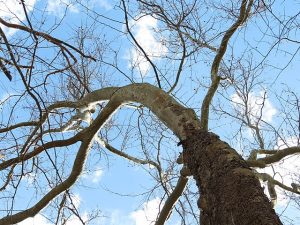
|
Resources
See below for some pictures of this event.

